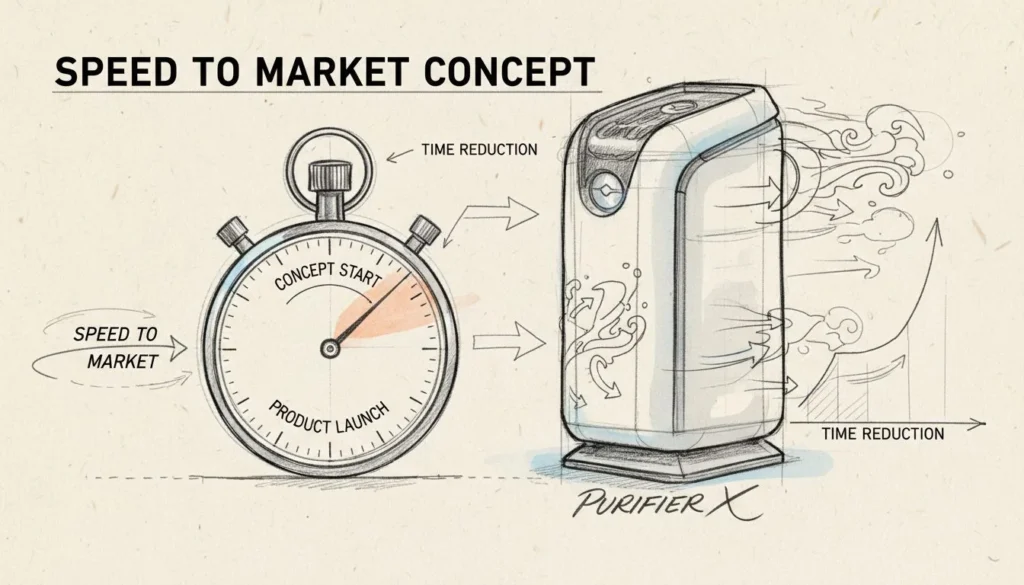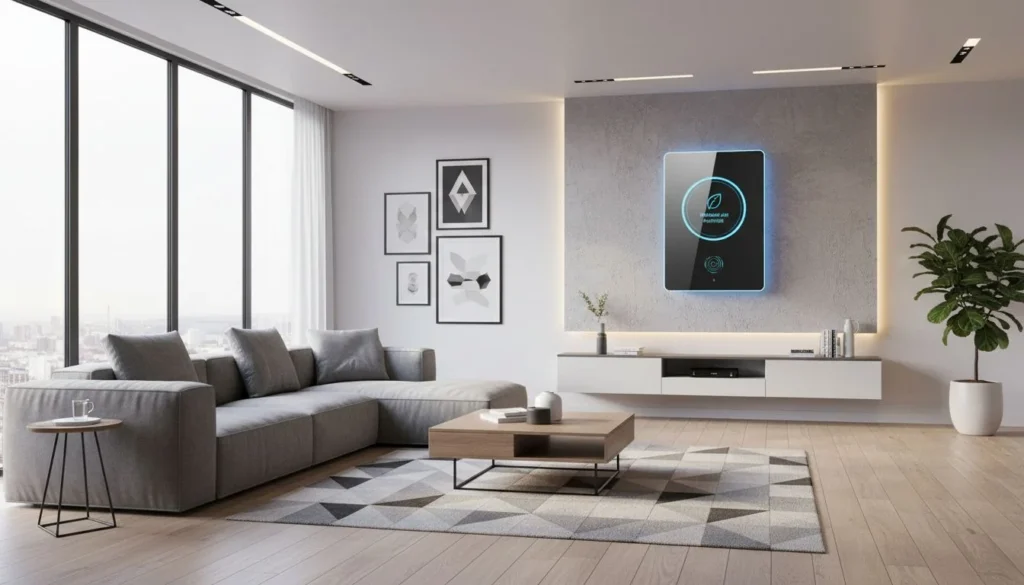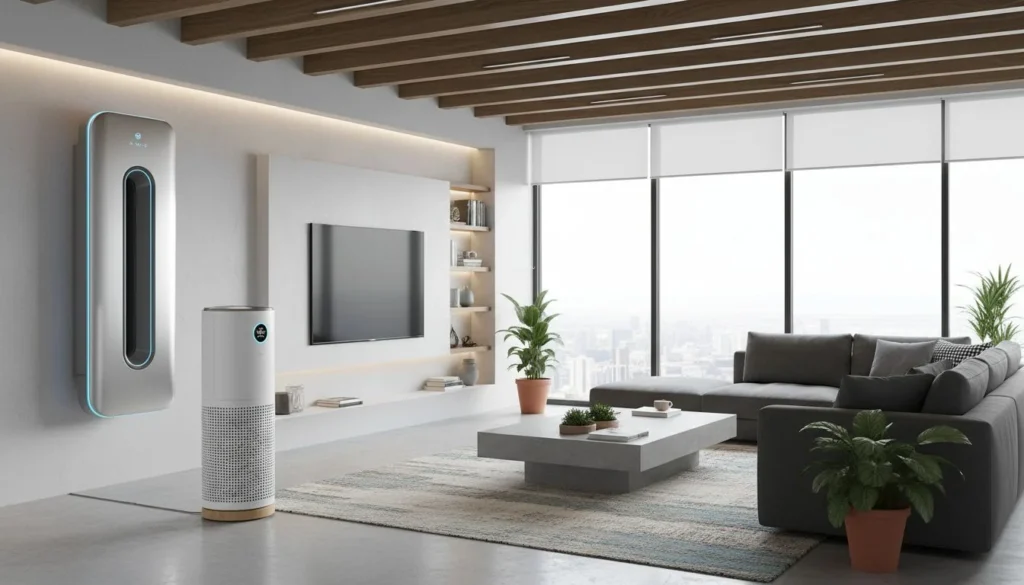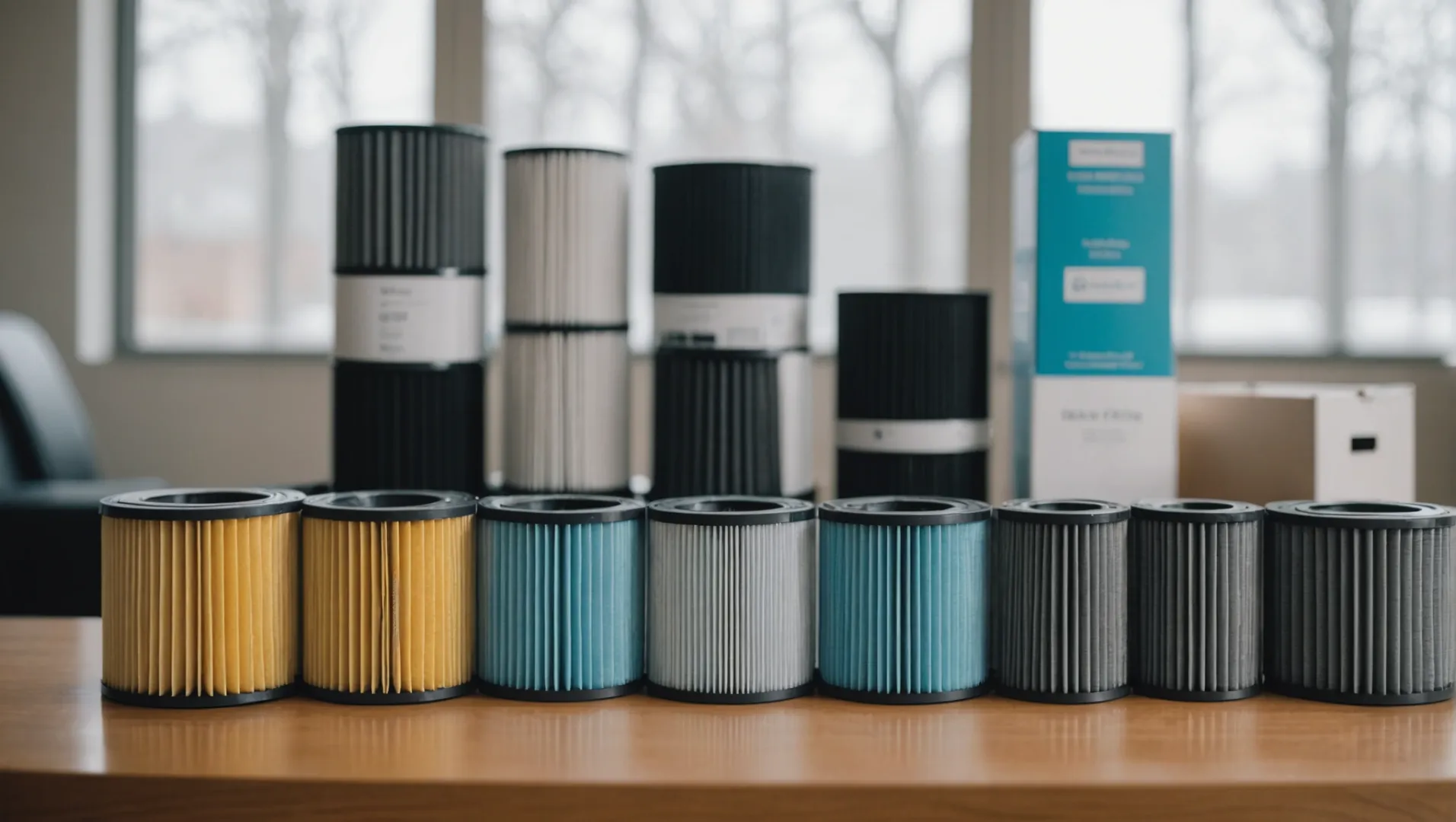
공기 필터의 세계를 탐색하는 것은 어려울 수 있지만 꼭 그럴 필요는 없습니다!
올바른 공기 필터 미디어를 선택하는 것은 대상 오염 물질과 해결하려는 시나리오에 따라 달라집니다. 이해 MERV 등급과 HEPA 또는 활성탄과 같은 필터 유형은 효과적인 공기 정화를 위한 정보에 입각한 결정을 내리는 데 도움이 됩니다.
공기 필터 미디어의 기본은 필수이지만, 반려동물 냄새 제어나 곰팡이 위험 관리와 같은 특정 시나리오를 자세히 살펴보면 맞춤형 솔루션을 찾을 수 있습니다. 필요에 맞는 최적의 필터를 선택하기 위한 실용적인 조언과 전문가 인사이트를 계속 읽어보세요.
HEPA 필터는 0.3마이크론 크기의 입자를 99.97% 이상 포집합니다.True
HEPA 필터는 매우 효율적이어서 대부분의 미세 입자를 포집하여 공기질을 개선합니다.
무엇 MERV 등급은 무엇이며 왜 중요한가요?
의 중요성 이해 MERV 등급은 집이나 사무실 환경에 적합한 공기 필터를 선택하는 데 매우 중요합니다.
MERV 1에서 20까지의 등급은 공기 필터의 입자 포집 능력을 측정합니다. 높음 MERV 값은 더 미세한 여과를 나타내며 먼지, 꽃가루, 심지어 박테리아와 같은 작은 입자를 효과적으로 포집하여 실내 공기질을 크게 개선합니다.
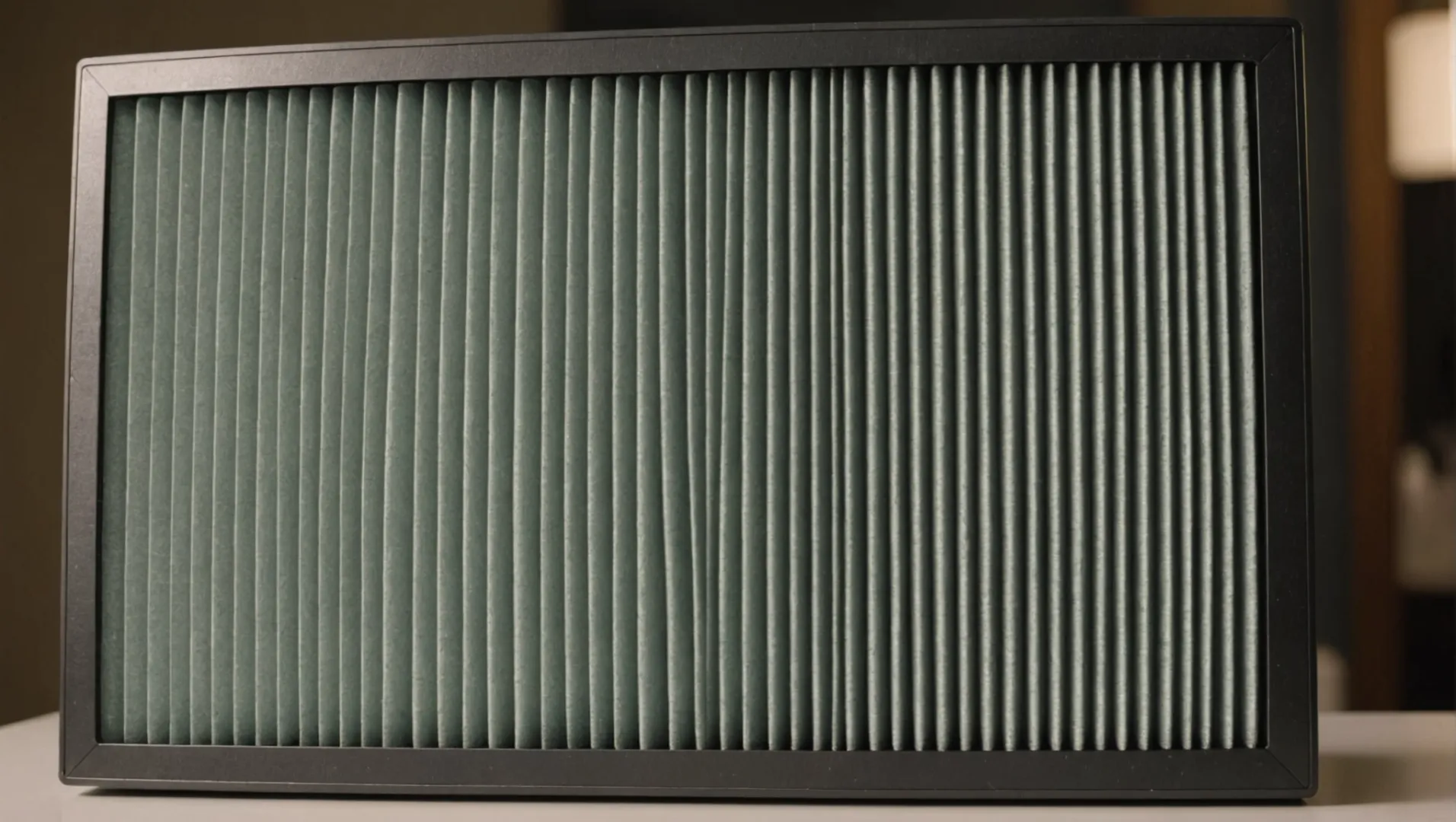
이해 MERV 평가
MERV 는 최소 효율 보고 값을 나타냅니다. 공기 필터의 전반적인 효율성을 평가하는 기준입니다. 1에서 20까지 숫자가 높을수록 작은 입자를 포집할 수 있는 능력이 더 크다는 것을 나타냅니다. 예를 들어, 필터의 MERV 평가1 등급이 1이면 카펫 섬유와 같은 큰 입자를 걸러낼 수 있고, 등급이 13인 필터는 먼지, 꽃가루, 일부 박테리아 등 0.3마이크론 정도의 작은 입자를 걸러낼 수 있습니다.
방법 MERV 등급이 공기질에 미치는 영향
적절한 필터를 사용하여 MERV 등급을 받으면 실내 공기의 질을 크게 향상시킬 수 있습니다. 병원이나 알레르기 환자가 있는 가정과 같이 공기 청정도가 중요한 환경에서는 높은 등급의 필터가 필수적입니다. 그러나 여과 효율과 공기 흐름의 균형을 맞추는 것이 중요하며, 너무 제한적인 필터는 공기 흐름을 방해하고 HVAC 시스템 효율을 떨어뜨릴 수 있습니다.
표: MERV 등급 및 파티클 유형
| MERV 평가 | 캡처 |
|---|---|
| 1-4 | 꽃가루, 집먼지 진드기 |
| 5-8 | 곰팡이 포자, 헤어 스프레이 |
| 9-12 | 레지오넬라, 납 먼지 |
| 13-16 | 박테리아, 연기 입자 |
| 17-20 | 바이러스, 탄소 먼지 |
실제 적용 사례 MERV 평가
에어 필터를 선택할 때는 사용 환경의 특정 요구 사항을 고려하세요. 예를 들어
- 반려동물 동반 가정 이 있는 필터를 사용하면 이점을 얻을 수 있습니다. MERV 평가2 5 이상이면 반려동물의 비듬을 잡을 수 있습니다.
- 어린 자녀가 있는 가족 는 박테리아와 알레르기 유발 물질을 효과적으로 제거하기 위해 13등급 이상의 필터를 고려해야 합니다.
- 산불 연기가 발생하기 쉬운 지역 가 있는 필터가 필요할 수 있습니다. MERV 14 이상의 등급으로 연기 입자를 포집하고 공기질을 개선합니다.
이러한 측면을 이해하면 안전과 편안함을 모두 보장하면서 특정 요구 사항에 맞게 선택할 수 있습니다.
MERV 등급 범위는 1에서 20까지입니다.True
MERV 등급은 공기 필터 효율을 1에서 20까지의 척도로 측정합니다.
MERV 등급이 높을수록 HVAC 효율이 떨어집니다.True
MERV가 높은 필터는 공기 흐름을 제한하여 HVAC 시스템에 영향을 줄 수 있습니다.
다양한 공기 필터 유형은 특정 오염 물질에 대해 어떻게 작용하나요?
다양한 공기 필터 유형이 어떻게 특정 오염 물질을 처리하여 더 깨끗하고 건강한 실내 공기를 보장하는지 알아보세요.
다양한 공기 필터 유형은 특정 오염 물질을 제거하도록 설계되었습니다. HEPA 필터는 먼지 및 알레르겐과 같은 미세 입자를 포집하는 데 탁월하며 활성탄 필터는 냄새와 휘발성 유기 화합물(VOC)을 제거하는 데 이상적입니다. 올바른 필터를 선택하려면 이러한 기능을 이해하고 해결하고자 하는 오염 물질에 맞는 필터를 선택해야 합니다.

에어 필터의 기본 이해
공기 필터는 공기 중 오염 물질을 제거하여 실내 공기질을 유지하는 데 필수적입니다. 공기 필터는 디자인, 소재, 대상 오염물질에 따라 매우 다양합니다. 여기에서는 다양한 유형의 공기 필터가 특정 실내 오염 물질을 효과적으로 처리하기 위해 어떻게 작동하는지 살펴봅니다.
HEPA 필터: 미세 입자 포착
고효율 미립자 공기(HEPA) 필터는 0.3마이크론 크기의 입자를 99.97% 이상 포집할 수 있는 것으로 알려져 있습니다. 특히 다음에 효과적입니다. 먼지3, 꽃가루, 곰팡이 포자, 애완동물의 비듬 등을 제거합니다. 따라서 HEPA 필터는 알레르기 환자가 있는 가정이나 일반적인 공기질을 개선하고자 하는 가정에 탁월한 선택이 될 수 있습니다.
활성탄 필터: 냄새 및 화학물질 흡수
활성탄 필터는 다공성이 높도록 처리된 탄소 소재로 구성되어 있습니다. 이러한 설계 덕분에 페인트나 청소용품과 같은 가정용품에서 방출되는 VOC를 포함한 가스와 냄새를 흡수할 수 있습니다. 이 필터는 반려동물이나 흡연자가 있는 가정과 같이 냄새 관리가 중요한 환경에 적합합니다.
박테리아 방지 필터: 미생물 성장 타겟팅
곰팡이나 박테리아와 같은 미생물 번식이 걱정되는 분들에게는 항균 필터가 특화된 솔루션을 제공합니다. 이러한 필터에는 유해 미생물을 중화시키는 항균제로 처리된 물질이 포함되어 있어 곰팡이 관련 건강 문제의 위험을 줄여줍니다.
자외선(UV) 필터: 세균 중화
UV 필터는 자외선을 사용하여 박테리아나 바이러스와 같은 미생물을 죽이거나 비활성화합니다. 입자 제거에는 효과적이지 않지만 독감 시즌에 병원이나 가정 등 세균 노출이 우려되는 환경에서 공기 정화를 강화하기 위한 보조 시스템으로 사용됩니다.
효과 극대화를 위한 필터 조합
많은 최신 공기청정기는 다양한 필터 유형을 결합하여 더 광범위한 오염 물질을 처리합니다. 예를 들어, 한 제품에 HEPA 필터와 활성탄 필터가 모두 장착되어 있어 미립자와 냄새를 포괄적으로 방지할 수 있습니다. 공기청정기를 선택할 때는 사용자의 특정 요구에 맞게 맞춤 설정이 가능한 모델을 고려하세요.
공기 정화에서 각 필터 유형이 수행하는 고유한 역할을 이해하면 환경 문제에 가장 적합한 옵션에 대해 정보에 입각한 결정을 내릴 수 있습니다.
HEPA 필터는 0.3마이크론 크기의 입자를 99.97%까지 포집합니다.True
HEPA 필터는 미세 입자를 걸러내도록 설계되어 높은 공기질을 보장합니다.
활성탄 필터는 VOC에 효과적이지 않습니다.False
활성탄 필터는 VOC를 효과적으로 흡수하여 냄새와 화학물질을 줄여줍니다.
냄새가 걱정되는 반려동물 보호자에게 가장 적합한 필터는 무엇인가요?
반려동물 냄새는 지속적이고 관리하기 어려울 수 있습니다. 올바른 공기 필터를 선택하면 집안 환경을 쾌적하게 유지하는 데 큰 차이를 만들 수 있습니다.
반려동물을 키우는 가정에서는 활성탄과 HEPA 13을 결합한 필터가 가장 효과적입니다. 활성탄은 냄새 분자를 포집하고 HEPA 13은 공기 중 반려동물의 비듬과 박테리아를 포집하여 집안을 더 깨끗하고 냄새 없는 상태로 유지합니다.

악취 제어에서 활성탄의 역할
활성탄 필터는 반려동물 냄새를 억제하는 데 매우 효과적입니다. 활성탄은 넓은 표면적에 냄새를 유발하는 분자를 가두어 반려동물의 냄새를 효과적으로 중화시킵니다. 반려동물을 여러 마리 키우는 가정이나 냄새가 강한 동물을 키우는 가정에 특히 유용합니다.
HEPA 13: 반려동물 주인을 위한 필수품
HEPA 13 필터는 반려동물의 비듬과 박테리아를 포함한 작은 입자를 포집하는 능력으로 잘 알려져 있습니다. 이 정도의 여과 수준은 냄새와 알레르겐을 효과적으로 관리하고자 하는 반려동물 보호자에게 매우 중요합니다. HEPA 13과 활성탄을 결합하면 반려동물 관련 오염 물질에 대한 강력한 듀오가 만들어집니다.
기본 필터의 한계 이해하기
기본 필터는 큰 입자는 제거할 수 있지만, 냄새와 작은 알레르기 유발 물질을 관리하는 데는 부족한 경우가 많습니다. 반려동물 보호자는 다음과 같이 냄새 제어 기능이 구체적으로 언급된 필터를 찾아야 합니다. 활성탄 기술4.
올바른 공기청정기 공급업체 선택의 중요성
고성능 제품을 전문으로 하는 공기청정기 공급업체를 선택하는 것이 중요합니다. 고출력 공기 흐름과 낮은 소음 수준은 HEPA 필터의 효율성을 높여 철저한 정화를 보장합니다. 공급업체를 선택할 때는 다양한 필터 옵션을 제공하는 전문성과 높은 CADR(청정 공기 전달률)을 유지할 수 있는 능력을 고려하세요.
필터 구매 시 고려해야 할 요소
| 기능 | 중요성 |
|---|---|
| 활성탄 | 반려동물 냄새를 중화시키는 데 필수적입니다. |
| HEPA 13 | 반려동물의 비듬과 박테리아를 효과적으로 포집합니다. |
| 소음 수준 | 저소음으로 생활 공간에서 편안함을 보장합니다. |
| 공기 흐름 | 효율적인 필터링을 위해서는 높은 공기 흐름이 필요합니다. |
신선한 집을 유지하기 위한 실용적인 팁
적시에 필터를 교체하고 청소하는 등 공기청정기를 정기적으로 관리하면 공기청정기의 효율을 극대화할 수 있습니다. 공기 필터의 사용을 보완하기 위해 환기를 잘하고 반려동물 공간을 정기적으로 청소하는 것도 도움이 됩니다.
활성탄 필터는 반려동물의 냄새를 효과적으로 중화합니다.True
활성탄이 냄새 분자를 포집하여 반려동물의 냄새를 중화합니다.
기본 필터만으로도 반려동물 냄새를 관리할 수 있습니다.False
기본 필터는 고급 필터에 비해 냄새 제어 기능이 부족합니다.
부모가 집에서 아기에게 안전한 공기질을 보장하려면 어떻게 해야 할까요?
안전한 환경을 조성하는 것은 아기의 건강을 위해 매우 중요하며, 공기의 질은 중요한 요소입니다. 그렇다면 부모는 아기가 숨 쉬는 공기가 깨끗하고 안전한지 어떻게 확인할 수 있을까요?
집에서 아기에게 안전한 공기질을 보장하기 위해 부모는 HEPA 13 또는 14 필터가 장착된 공기청정기를 사용하여 PM2.5 입자를 효과적으로 제거해야 합니다. 또한 환기를 잘하고 실내 흡연을 피하며 정기적으로 표면을 청소하는 것도 건강한 실내 환경을 유지하는 데 도움이 됩니다.
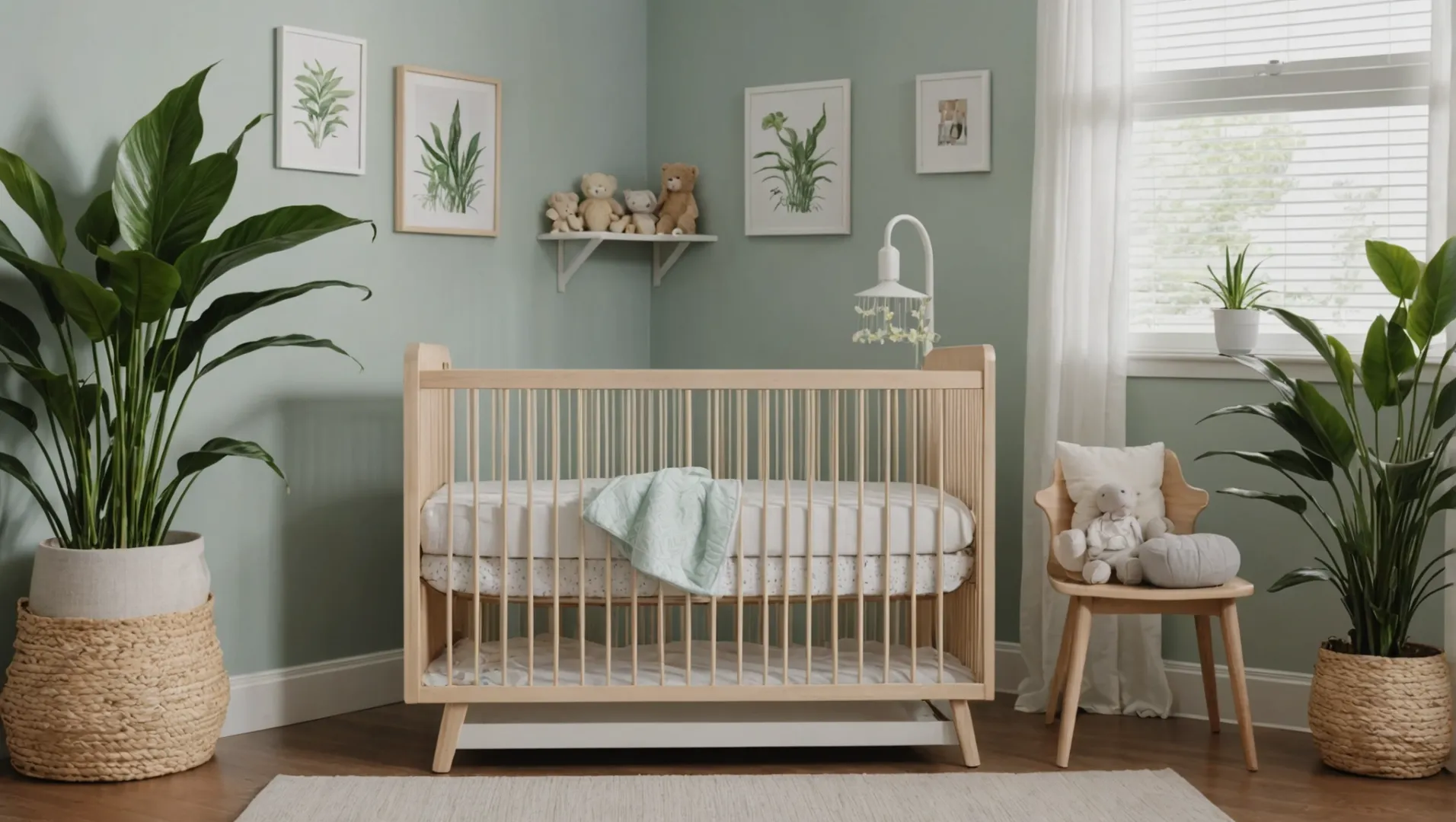
대기 오염 물질과 아기에게 미치는 영향에 대한 이해
아기는 호흡기가 아직 발달 중이기 때문에 공기 중 오염 물질에 특히 취약합니다. 일반적인 실내 오염 물질에는 집먼지 진드기, 곰팡이 포자, 반려동물의 비듬, 천식이나 알레르기와 같은 호흡기 문제를 악화시킬 수 있는 PM2.5 입자 등이 있습니다. 부모는 이러한 오염 물질을 이해함으로써 그 영향을 줄이기 위한 조치를 취할 수 있습니다.
공기 정화에서 HEPA 필터의 역할
고효율 미립자 공기(HEPA) 필터는 작은 입자를 포집하는 능력으로 잘 알려져 있습니다. PM2.5가 걱정되는 부모님에게는 0.3마이크론 크기의 공기 중 입자를 99.97%까지 포집할 수 있는 HEPA 13 또는 HEPA 14 필터를 추천합니다. 따라서 집안에서 유해한 오염 물질을 줄이는 데 매우 효과적입니다.
안전한 공기 확보를 위한 추가 조치
동안 HEPA 필터5 는 중요한 역할을 하며, 깨끗한 공기를 보장하기 위한 광범위한 전략의 일부입니다:
- 환기를 잘 유지하세요: 실외 공기질이 양호할 때 창문을 열어 집 안을 환기하세요.
- 정기 청소: 먼지가 쌓이는 것을 최소화하기 위해 표면을 청소하고 HEPA 기능이 장착된 진공청소기로 청소하세요.
- 실내 흡연을 피하세요: 연기에는 흡연을 중단한 후에도 공기 중에 오랫동안 남아있을 수 있는 수많은 유해 화학물질이 포함되어 있습니다.
- 관엽 식물: 거미 식물이나 평화 백합과 같은 특정 식물은 오염 물질을 흡수하여 실내 공기질을 자연적으로 개선할 수 있습니다.
올바른 공기청정기 선택하기
공기청정기를 선택할 때는 방 크기와 소음 수준 등의 요소를 고려하세요. CADR(청정 공기 전달률)이 높은 장치는 과도한 소음 없이 효율적인 공기 정화를 보장하며, 이는 아기에게 평화로운 환경을 유지하는 데 필수적입니다. 최고 등급의 모델에 대한 리뷰와 비교를 참고하면 선택에 도움이 될 수 있습니다.
필요에 따른 모니터링 및 조정
마지막으로 실내 공기질 모니터를 사용해 오염 물질 수치를 추적하세요. 이를 통해 부모는 필요에 따라 전략을 조정하여 자녀의 안전한 호흡 환경을 효과적으로 유지할 수 있도록 조치를 취할 수 있습니다. 최신 연구와 전문가 조언을 정기적으로 검토하면 실내 공기질 개선에 대한 새로운 인사이트를 얻을 수도 있습니다.
HEPA 13 필터는 99.97%의 입자를 포집합니다.True
HEPA 13 필터는 0.3마이크론의 작은 입자를 걸러내도록 설계되었습니다.
실내 흡연은 아기에게 공기질에 영향을 미치지 않습니다.False
실내 흡연은 유해한 화학물질을 방출하여 공기질에 영향을 미칩니다.
결론
올바른 공기 필터 미디어를 선택한다는 것은 특정 요구 사항을 이해하는 것을 의미합니다. 지금 바로 실내 공기질을 개선하기 위한 지식을 갖추고 정보에 입각한 선택을 하세요.
-
MERV 등급이 필터 효과를 어떻게 정의하는지 알아보세요: 최소 효율 보고 값(MERV)은 0.3~10마이크론(μm) 사이의 큰 입자를 포집하는 필터의 능력을 보고합니다. ↩
-
반려동물의 비듬을 포집하기 위한 최적의 MERV 등급 알아보기: 그러나 반려동물 소유자의 경우 반려동물의 비듬과 같은 작은 입자를 포집할 수 있으므로 13과 같이 MERV 등급이 높은 필터를 선택하는 것이 좋습니다 ... ↩
-
먼지와 알레르겐을 포획하는 HEPA의 효율성에 대해 알아보세요: 이 유형의 공기 필터는 이론적으로 최소 99.97%의 먼지, 꽃가루, 곰팡이, 박테리아 및 0.3 크기의 모든 공기 중 입자를 제거할 수 있습니다 ... ↩
-
활성탄이 냄새를 효과적으로 중화시키는 방법을 알아보세요: 연기 및 화학 연기를 제거하는 데 도움이 됩니다: 활성탄 필터가 장착 된 공기 청정기는 연기와 화학 연기를 제거하는 데 탁월합니다. ↩
-
HEPA 필터가 유아를 위해 공기를 효과적으로 정화하는 방법을 알아보세요: 대부분의 공기청정기는 몇 가지 예방 조치만 취하면 아기 주변에서 완벽하게 안전합니다. 공기청정기는 필터를 통해 공기 중 오염 물질을 제거합니다. ↩



